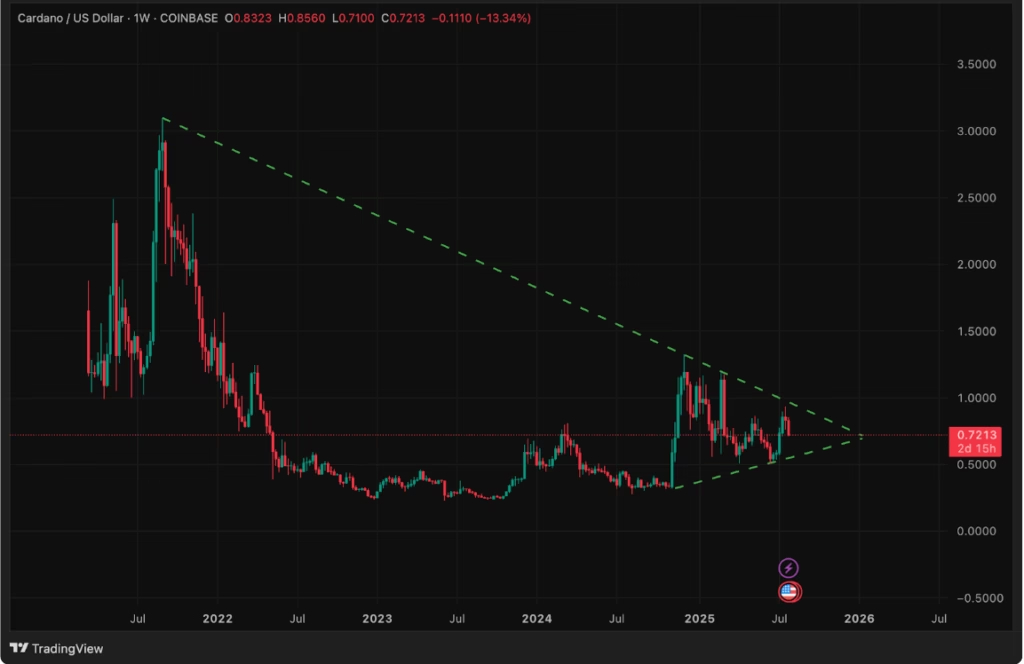- Cardano price is testing key support near $0.68 after dropping over 13% this week amid strong bearish pressure.
- A breakout from its long-term symmetrical triangle this August will likely determine ADA’s direction for Q3.
Cardano (ADA) finds itself at a pivotal moment as bearish forces dominate the charts. The price has dropped over 13% this week, now hovering below $0.74 and testing lower support levels near $0.68, signaling growing pressure from sellers.
Cardano’s Critical Technical Setup
The weekly chart paints a picture of long-term tension. ADA is pressing against the apex of a multi-year symmetrical triangle—a pattern that usually precedes a major move.

This triangle stretches all the way back to the 2021 all-time high. Now, with the price rejected at the descending resistance line, the spotlight shifts to the $0.68 support level. A breakout—either up or down—could shape Cardano’s direction for the rest of Q3.
A Bearish Tone on the Cardano Daily Chart
On the daily timeframe, the signs point to a market under strain. The price has broken down from July’s high near $0.87, triggering a “Change of Character” (CHoCH)—a technical signal often associated with reversals. ADA is currently in a red supply zone, an area marked by previous selling pressure. Adding to the bearish outlook, the Parabolic SAR (Stop and Reverse) indicator continues to hover above the price, which signals that downward pressure remains in control.
What Could Happen Next?
If ADA fails to hold the $0.68 support, a deeper correction could unfold. Conversely, if buyers defend this level and push the price above resistance, it might trigger a breakout rally. For now, volatility is increasing, and traders should watch closely for a decisive move in either direction.
Cardano’s symmetrical triangle pattern suggests that August could be a make-or-break month. Whether ADA breaks down or rebounds will likely depend on broader market sentiment and incoming volume at key technical zones.
DISCLAIMER:
The views and opinions expressed herein are solely those of the author and do not necessarily reflect the views of the publisher. The publisher does not endorse or guarantee the accuracy of any information presented in this article. Readers are encouraged to conduct further research and consult additional sources before making any decisions based on the content provided.